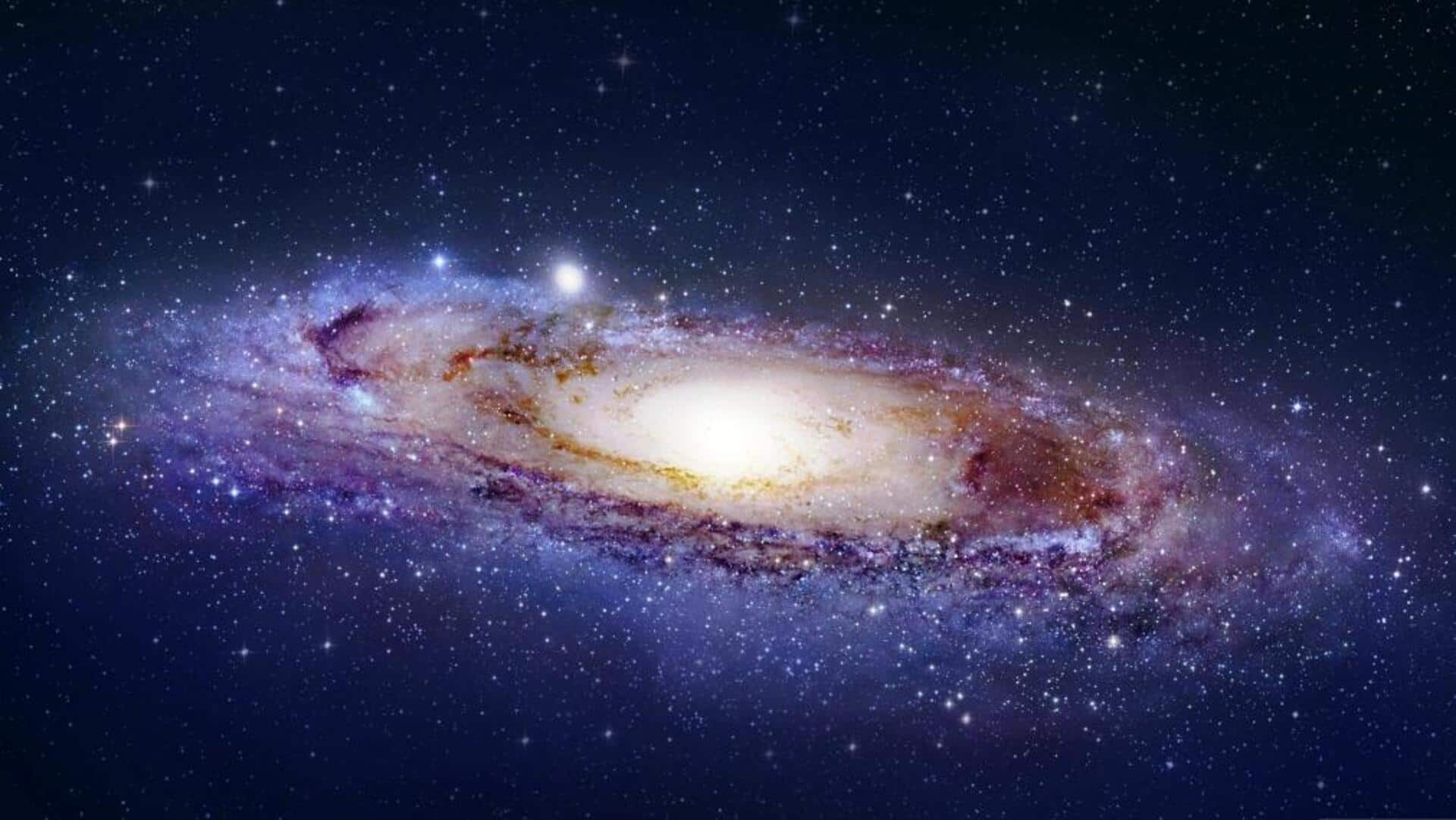
Milky Way and its neighboring galaxy may have already collided
What's the story
A recent study suggests that our Milky Way galaxy could be much larger than previously thought, potentially overlapping with the neighboring Andromeda galaxy. This groundbreaking discovery was made by astronomers from Australia and the US, who used the Keck Cosmic Web Imager to examine a single galaxy approximately 270 million light-years away. Their findings revealed interactions between this galaxy's radiant disk and its circumgalactic medium (CGM), a halo of gas and dust that surrounds galaxies.
Galactic halos
A vast halo containing most of a galaxy's visible mass
The circumgalactic medium (CGM) is a vast halo that surrounds galaxies, containing about 70% of a galaxy's visible mass. Despite its significant presence in the universe, little is known about the typical structure of this medium. This lack of knowledge makes it challenging to determine where one galactic halo ends and another begins. The recent study aimed to shed light on these boundaries by examining interactions between the CGM and the radiant disk of a distant galaxy.
Unexpected discoveries
Study reveals unexpected findings about CGM
The research team focused on the spiral galaxy IRAS 08339+6517 (IRAS08 for short). They captured images showing a vast expanse of space, extending some 90,000 light-years beyond the edges of this galaxy's glowing disk. These images revealed unexpected changes in the composition of the CGM. The team found hydrogen stripped of its electrons far beyond the cosmic threads of gas mixed with another, heavier element - oxygen.
Ionization mapping
Astronomers map changes in ionization density
Using spectral data from images, the researchers mapped changes in ionization density over a scale of several thousand light-years. They identified a gradually fading zone influenced by IRAS08's own starlight. Lead author Nikole Nielsen, an astrophysicist from Swinburne University in Australia, stated, "In the CGM, the gas is being heated by something other than typical conditions inside galaxies." She further explained this likely includes heating from diffuse emissions from collective galaxies in the universe and possibly some contribution by shocks.
Galactic implications
Implications for our understanding of the Milky Way
The findings from this study have significant implications for our understanding of the Milky Way. Nielsen suggests, "It's highly likely that the CGMs of our own Milky Way and Andromeda are already overlapping and interacting." This could mean that the long-anticipated collision between these two galaxies may have already begun, at least in terms of their circumgalactic mediums beginning to intersect. The study contradicts previous findings, which suggested 50-50 chance of collision within the next 10 billion years.